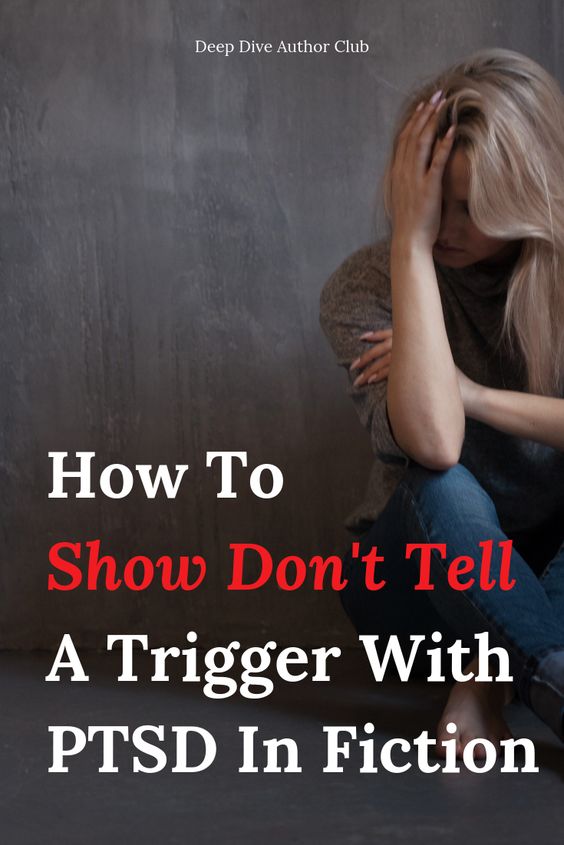Everyone has an emotional trigger. This is not about mental health, anxiety, PTSD — none of that. Every one has emotional triggers – but are you using this to increase the emotional tension in your story? Why not!?

What Does Your Character Think Is Their Strength?
What does your character pride themselves on having, being, doing, possessing, needing, controlling, etc? Do they rest their identity in any of these things? Some common ones are: acceptance, respect, being liked, being needed, freedom, attention, being in control, autonomy, safety, etc.
It could be a strength or aptitude that was reinforced when they were young. A child identified as gifted at a young age might place all their identity and self-worth in being smart, in being the smartest person in the room. How would they feel when faced with a new colleague who is smarter, faster, more innovative? What would that do to their self-confidence?
This where personality plays into things. Would they react in anger and lash out, gossip, try to undermine the new colleague at every opportunity? Would they sink into shame and beat themselves up constantly? Would they become competitive and work themselves into the groud to maintain what they believe they’re owed or due?

A woman who’s always told how pretty she is might begin to expect that compliment from people, from men in particular. What thought takes root if that doesn’t happen? What emotions come to the fore if she’s in the room when another woman gets all the compliments and not her?
Emotional triggers are often linked to anything at all that a character feels they’re really good at, that they deserve, something they see as their personal identity, or that they’re constantly striving for (feeling heard by a spouse for example).
What Does Your Character Value Most And Fears Having Taken Away?
This where the primary and secondary emotions come into play. You can read more about that here – but for to recap a primary emotion is an instinctive emotional response: fear, guilt, envy, jealousy, attraction. A secondary emotion is any emotion that requires a thinking response: love, anger, hatred, shame, etc.
Anger and shame and love are always secondary emotions.
Some emotions can be either a primary or secondary emotion. Take attraction for instance (learn to write the body language of attraction here), attraction can be an instinctive thing (a primary emotion), but it can also develop over time with familiarity (a secondary emotion).
An emotional trigger skips the primary emotion phase and jumps right to the thinking response – the secondary emotion. That’s why you can instantly be angry at something and not know why.
So, for example, I have a character with an emotional trigger of feeling high maitenance. If she perceives that people think she’s being high maitenance, too-big-for-her-britches, because it’s a learned response (one that she’s practiced many times) she skips right to feeling shame. The shame is what’s observable (showable in actions or dialogue). The shame is what I show when writing this emotional trigger.

What Emotions Are Activated When Key Needs Are Or Aren’t Met?
Activated is another way to say triggered, but in this context it seems more descriptive. Once you’ve identified the feelings or fears that are emotional triggers for your character (and yes you can have more than one), next figure out what emotions are activated when that situation crops up.
You have to think in terms of secondary emotions here. Do they immediately become angry? Are they riddled with shame? Do they feel loved? Remember, triggers don’t have to be negative!
Now, to manage or overcome an emotional trigger, an individual needs a good measure of self-awareness and humility. Then, as Brene Brown would say, they need to get curious. Why do they feel that way? What do they feel is at stake?
How To Show And Not Tell An Emotional Trigger
In my Method Acting For Writers Masterclass, I talk about how primary emotions are usually felt and secondary emotions are usually seen. How does that play out?
Eliza’s husband is three hours later coming home than he said he’d be, without answering texts, emails or phone calls to explain the delay. Eliza has shipped the kids off to grandma’s for the night, prepared a nice dinner, and gottten all dressed up — as a surprise.
By the time hubs arrives home, Eliza has cleared the romantic setting from the table, put all the still-edible bits of food in the fridge, and Eliza’s changed out of the sexy outfit she’d been wearing into a terry bathrobe.
During the whole clean-up, her primary emotions are going wild. Frustration (feeling taken for granted). Concern (did something happen at work). Fear (was he in an accident). Jealousy (was there another woman). You’d show all these emotions colliding around inside through physiology , actions, and internal dialogue.

Once hubs arrives home and is safe – oh, whoops – went out for drinks did I forget to text you? Now she has to DO something with these emotions so now she’s angry. But if Eliza had an emotional trigger of say… feeling in control, then not knowing where her hubs was when he was supposed to be at home would be a trigger for a secondary emotion. Having her well-thought-out plans for the surprise would be an emotional trigger.
Emotional triggers can be powerful and effective, because they’re so often over-the-top emotional reactions. When your emotional triggers are activated, you’re not just angry — you’re livid. People can observe these night-and-day emotional hairpin turns because they seem to come out of nowhere if you’re not privvy to what the trigger is.
Are you using emotional triggers in your novel? What is your character afraid will be taken away or threatened?
Been told you should learn Deep Point Of View? Had an editor or critique partner tell you to “go deeper” with the emotions in your fiction? Looking for a community of writers seeking to create emotional connections with readers? Check out the Free Resource Hub and then join the Going Deeper With Emotions In Fiction Facebook group.